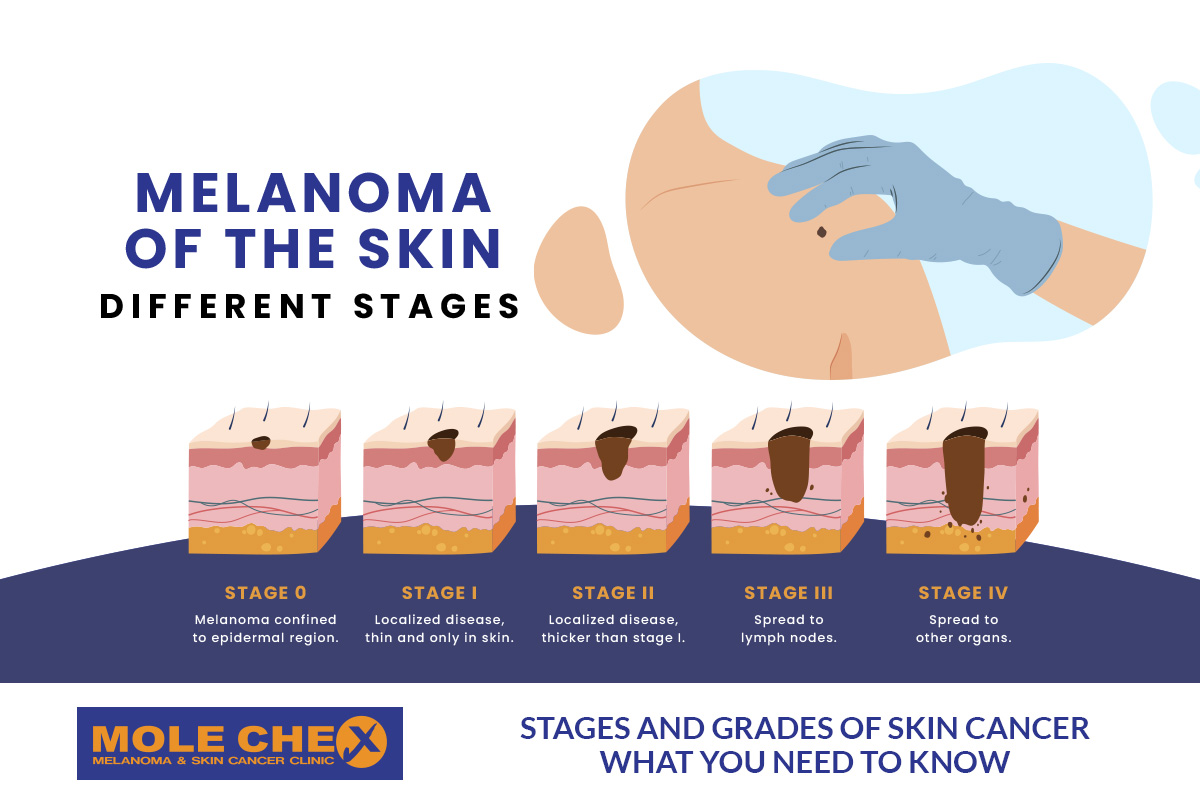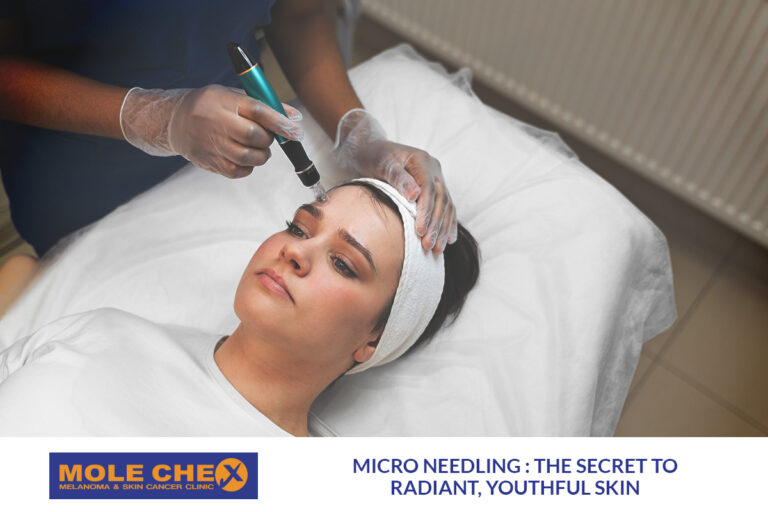Stages and Grades of Skin Cancer: What You Need to Know

Skin cancer is one of the most common types of cancer in Australia, where high UV exposure increases the risk for many people. Understanding the stages and grades of skin cancer is critical for early detection and effective treatment. When caught early, skin cancer is highly treatable and knowing how it progresses can help you take control of your skin health.
In this guide, we will explain the stages and grades of skin cancer, what they mean and why they are important for diagnosis and treatment.
What Are Stages and Grades in Skin Cancer?
Stages and grades are terms doctors use to describe the severity and behaviour of skin cancer.
- Stages describe how far the cancer has spread, focusing on the size of the tumour, depth of invasion and whether it has reached lymph nodes or distant organs.
- Grades focus on how abnormal the cancer cells look under a microscope, helping doctors predict how fast the cancer might grow or spread.
Together, these classifications guide treatment options and help predict outcomes.
Stages of Skin Cancer
Skin cancer staging depends on the type of skin cancer.Skin cancers (like basal cell carcinoma and squamous cell carcinoma) are staged differently.
Melanoma Stages
Melanoma, the most aggressive type of skin cancer, is staged from 0 to IV:
- Stage 0 (In Situ):
- Cancer cells are confined to the top layer of skin (epidermis).
- Treatment involves surgical removal with an excellent prognosis.
- Stage I:
- Tumour is small (up to 2mm thick) and has not spread to lymph nodes or other areas.
- Surgery is usually very effective at this stage.
- Stage II:
- Tumour is thicker (over 2mm) and may show ulceration but has not spread beyond the primary site.
- Treatment may include surgery and follow-up monitoring.
- Stage III:
- Cancer has spread to nearby lymph nodes or tissues close to the tumour.
- Treatment often includes surgery, immunotherapy, or radiation therapy.
- Stage IV:
- Cancer has spread to distant organs, such as the lungs, liver, or brain.
- Advanced treatments, like targeted therapy or immunotherapy, are used to manage the disease.
Non-Melanoma Stages
Non-melanoma skin cancers, such as basal cell carcinoma (BCC) and squamous cell carcinoma (SCC), are staged from 0 to IV:
- Stage 0 (Carcinoma In Situ):
Cancer cells are confined to the epidermis and have not invaded deeper layers.
- Stage I:
Tumour is small (2cm or less) and has not spread to nearby tissues or lymph nodes.
- Stage II:
Tumour is larger than 2cm or has started to invade deeper tissues.
- Stage III:
Cancer has invaded nearby structures (such as bone or muscle) or spread to one nearby lymph node.
- Stage IV:
Cancer has spread to distant organs or multiple lymph nodes.
Grades of Skin Cancer
Grading provides insight into how aggressive the cancer may be based on the appearance of the cells.
- Low-Grade (Grade 1):
- Cells resemble normal skin cells and grow slowly.
- Moderate-Grade (Grade 2):
- Cells show some abnormalities and grow at a moderate rate.
- High-Grade (Grade 3):
- Cells appear highly abnormal and are likely to grow or spread quickly.
Grades are especially useful in planning treatment, as higher-grade cancers often require more aggressive approaches.
Why Are Stages and Grades Important?
Understanding the stage and grade of skin cancer helps in several ways:
Determining Treatment Options
Early-stage cancers can often be treated with surgery alone. Advanced stages may require additional therapies like radiation, immunotherapy, or targeted therapy.
Predicting Prognosis
Lower-stage and low-grade cancers usually have better outcomes. Advanced stages or high-grade cancers may need more intensive treatment and follow-up care.
Planning Follow-Up Care
Staging and grading guide the frequency of follow-up appointments to monitor for recurrence or spread.
The Importance of Early Detection
Early detection is the most effective way to combat skin cancer. Most skin cancers, when caught early, are highly treatable.
What to Look For:
- Changes in Moles: Watch for changes in size, shape, or colour.
- New Growths: Be alert for unusual spots or lesions.
- Sores That Do not Heal: Persistent sores, especially in sun-exposed areas, can be a warning sign.
Perform regular self-checks and schedule annual skin checks with a professional.
How Molechex Can Help
At Molechex, we focus on the early detection and treatment of skin cancer. Our comprehensive skin checks identify suspicious lesions early. We also offer personalised care and treatment plans tailored to your needs.
Whether you are concerned about a mole, want a routine skin check, or need advice, our experienced team is here to support you.
Final Thoughts
Skin cancer is a serious condition, but understanding its stages and grades can empower you to take proactive steps toward early detection and treatment. Regular skin checks, both at home and with a professional, are your best defence against the disease. At Molechex, we are committed to helping you stay ahead of skin cancer. Schedule your skin check today and take the first step toward healthier, more protected skin.
Learn more by reading other articles :



